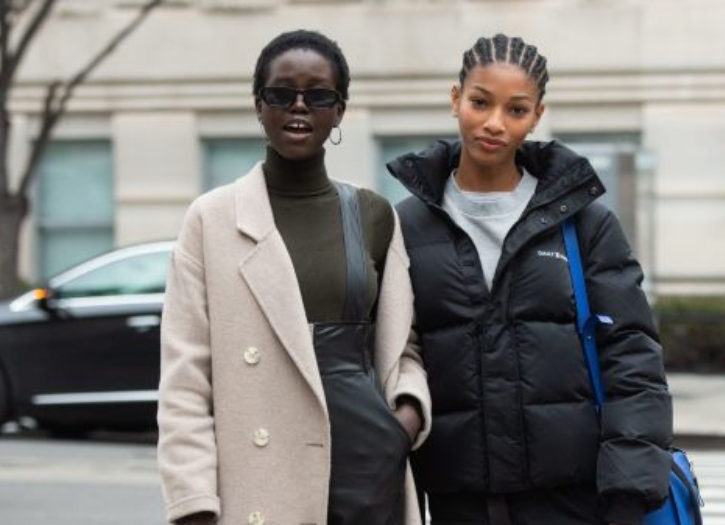Street style is fashion that is considered to have emerged not from studios, but from the population at large.
Street fashion is generally associated with youth culture, and is most often seen in major urban centers. Magazines and newspapers commonly feature candid photographs of individuals wearing urban, stylish clothing. Mainstream fashion often appropriates street fashion trends as influences. Most major youth subcultures have had an associated street fashion. Street style is different all around the globe.
The “street” approach to style and fashion is often based on individualism, rather than focusing solely on current fashion trends. Using street style methods, individuals demonstrate their multiple, negotiated identities, in addition to utilizing subcultural and intersecting styles or trends. This, in itself, is a performance, as it creates a space where identities can be explored through the act(ion) of dress.Bill Cunningham for The New York Times pointed street style out as a keen catalogue of ordinary people’s clothing.
Street style has always existed but it has become a phenomenon of 20th century. The increase in the standardization of life after World War II (suburbanization, mass marketing, the spread of television) may be linked to the appeal of “alternative” lifestyles for individuals in search of “identity”. Industrial production, particularly in the sphere of fashion, was not only the popularization of stylists’ tastes that move from high fashion, through prêt-à-porter, to the peripheries of the system. These were also tastes that originated among economically disfavored, marginal groups, the whole range of metropolitan tribes, that are able to trigger new fashion production and diffusion processes.
Phenomena of this kind have been studied for a long time in England and have revealed the importance of young people’s street styles during the post-war period, which may be linked to the generation of baby boomers, who came to represent a new sociocultural category—the “teenager”—who has money to spend and be an important motivation on economic and cultural world.
The history of identity and the history of clothing run on two parallel rails. In this connection, street style works as a facilitator of group identity and subcultural cohesion. Since the close of World War II, Western culture has seen a dramatic decline in the significance of the traditional sociocultural divisions such as race, religion, ethnicity, regionalism, nationalism, in defining and limiting personal identity. The tribe groupings, such as bikers, beats, and teddy boys in the 1950s; mods, hippies, and skinheads in the 1960s; headbangers, punks, and b-boys in the 1970s; and goths, new age travelers and ravers in the 1980s got dressed and unusual body decoration as an expression to create a sense of identity.
In the first half of the twentieth century, although the unaccompanied figure of the woman in the street was seen increasingly in fashion photographs, she often remained bound by the pursuits of a bourgeois existence, with the reality of the street beautified as a fantasy prop for high-end fashion.
Photo Credit: Shutterstock







Add Comment